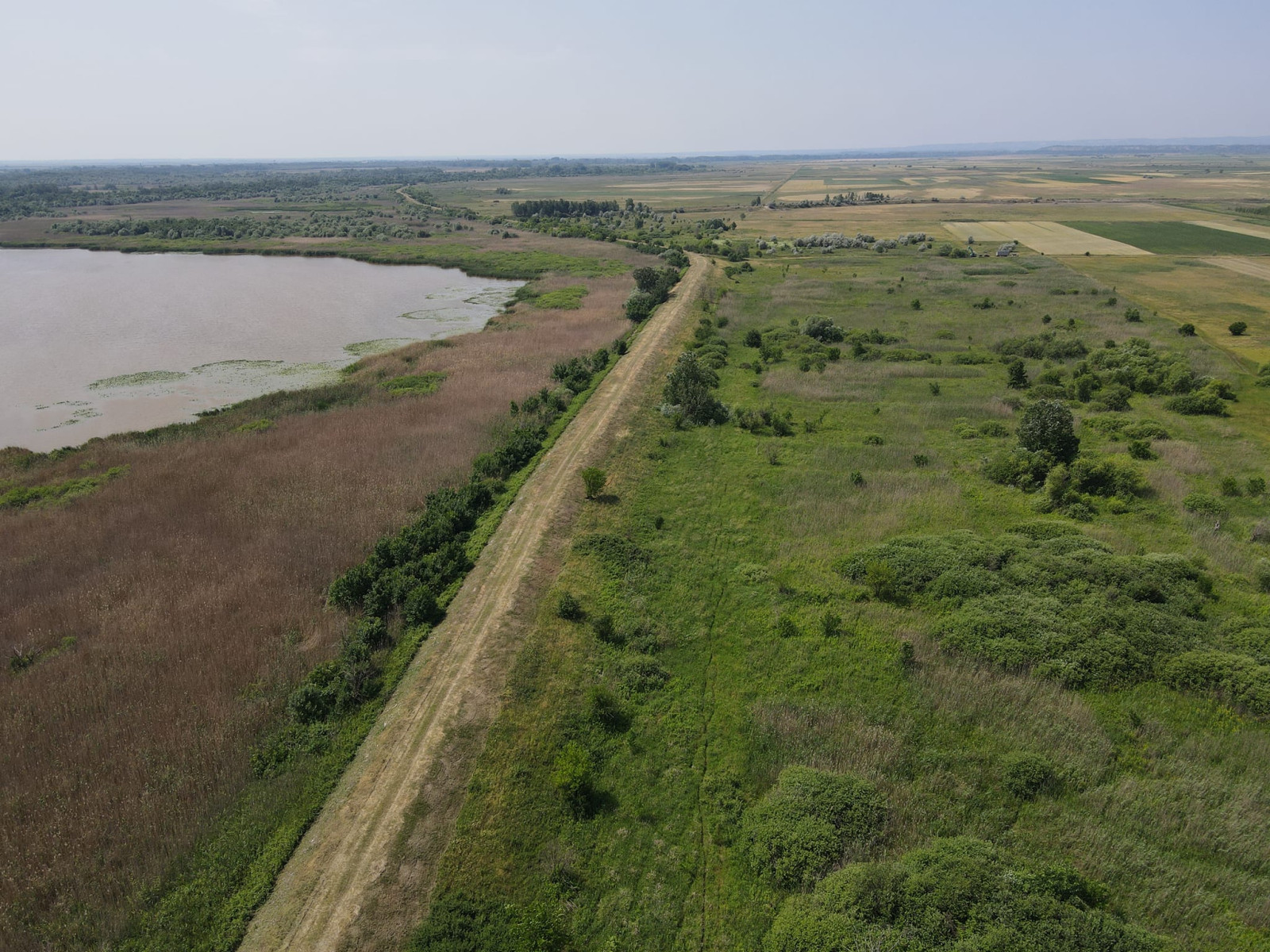Charger images
Les formats d'image autorisés sont de type jpeg, png ou gif
La taille maximale du fichier doit être de 20MB


This Ramsar protected area includes the oxbow canal of Stari Begej and three main marshy lakes Tiganjica, Carska bara and Perleska bara.
Carska bara (Tsar’s Marsh) is located on the alluvial plain between the Tisza and the Begej rivers, east of the Belo Blato Village and on the north side encircled by the Ečka fish farm lakes. Ečka fish farm represents the largest inland fish farm in Europe.
Carska Bara Nature Reserve consists of marshy lakes of Tiganjica, Perleska bara, Traktor bara, Botoški and Farkaždinski rit, plus the 8 km long old arm of the Begej River. The Begej is 2 to 3 m deep in this area, while the marsh itself is only 80 cm deep. Habitat includes lakes, reedbeds, alkaline meadows and softwood forests. Vegetation mostly consists of reeds and rushes, willow and poplar riverine forests. The reserve holds some 30 mammal species (otter, wild cat, wild boar, roe deer, brown hare, etc.), but is best known for its abundant birdlife—about 240 bird species.
There are thriving colonies of herons and egrets (all European species breed in the reserve, in some years up to a 1000 pairs) and cormorants (including Cormoran pygmée), Sarcelle d'été, Fuligule nyroca, several pairs of Pygargue à queue blanche, Guifette moustac, Gorgebleue à miroir, Rémiz penduline, Panure à moustaches, Rousserolle turdoïde, Rousserolle verderolle, Locustelle fluviatile, Locustelle luscinioïde, and sometimes rare Bouscarle de Cetti and Locustelle tachetée.
Among the wintering ducks are Canard souchet, Canard siffleur, and Fuligule nyroca. Pygargue à queue blanche, Busard des roseaux and Busard Saint-Martin, Faucon émerillon and Faucon pèlerin patrol the area. Surrounding bushes, scrub and fields hold Pinson du Nord, finches, pipits, Bruant des roseaux, Pie-grièche grise, and Grive litorne. Grue cendrée can be present.
Photos by Mileta Cekovic and Javna ustanova "Rezervati prirode" Zrenjanin (Nature Reserves Board, Zrenjanin).
The area is accessible via the regional Belgrade – Zrenjanin road; it is 55 km (1 hr) north of Belgrade, or 15 km south of Zrenjanin. For driving directions, zoom in on the map and click on the "P" (car park) sign. Behind the car park lies Hotel Sibila, currently not operational.
From the beginning of the trail to the village of Belo Blato, the westernmost levee route is about five and a half kilometres long. No driving is allowed on the levee (the barriers are closed and locked), only walking or cycling. Park in the shade by the closed hotel, climb the levee and explore further on foot. There is hardly any shade on the levee—carry plenty of water on hot days.
Against a small entrance fee (about 1 Eur per person), along the course of the Stari Begej there is a self-guided trail (I deliberately omitted this, more touristy trail, but zoom in on the map until the "Staza zdravlja" becomes visible), open to visitors from 9 a.m. to 6 p.m. throughout the year. There are no organized walking tours, but visitors can walk on their own along the 4.8 km long trail, where a new observation tower awaits among the trees, hence you can observe the reedbeds directly in front of it (also, there is a boardwalk through the reeds), but hardly the somewhat distant lake (for photos, check the management authority web-site among the links). The habitats are good, but you have to arrive well before the official opening hours so the tourists won't disturb your birds.
Votre feedback sera transmis à l’auteur.rice de cette zone et à l’équipe éditoriale de Birdingplaces, qui l’utiliseront pour améliorer la qualité des informations. (Vous souhaitez publier un commentaire visible en bas de page ? Fermez cette fenêtre et choisissez l’Option 1 : « Publier un commentaire, un conseil ou une observation ».)
Veuillez fournir des suggestions d'améliorations ou d'ajouts au texte de ce site ornithologique.
Veuillez fournir vos suggestions d'améliorations ou d'ajouts à la carte.
Veuillez fournir des suggestions d'améliorations ou d'ajouts à la liste des oiseaux.
Cliquez sur l'icône de l'oiseau () Insérez les noms d'oiseau dans votre langue. Ils seront automatiquement traduits pour les autres usagers !